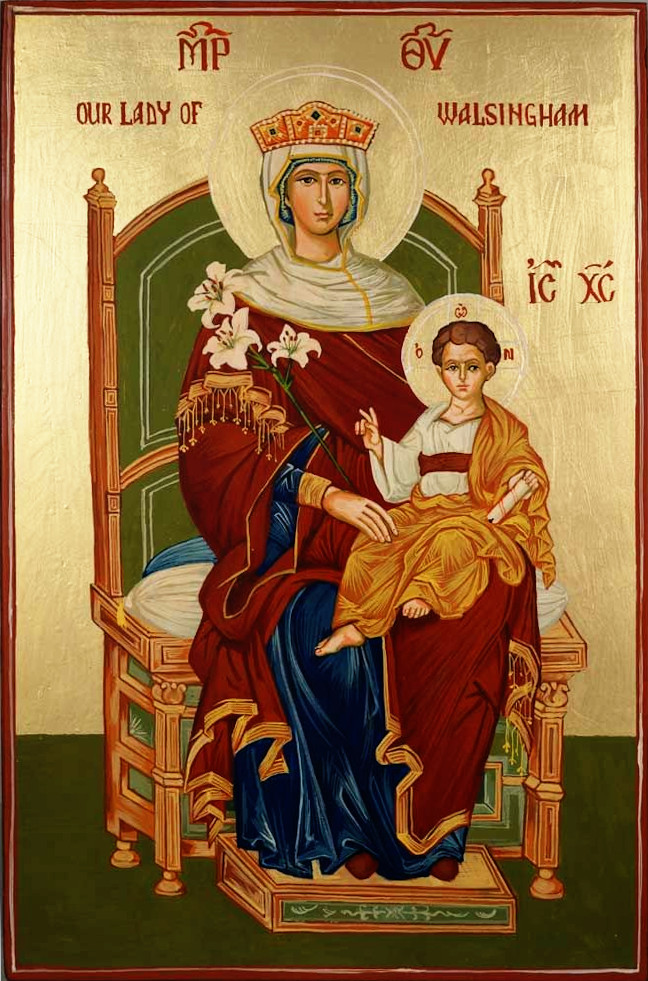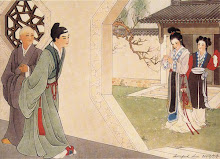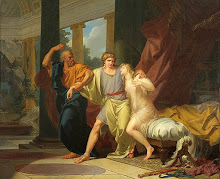So for this Fourth of July, you won’t have to put up with yours truly on this blog grousing cantankerously about the evils of American republicanism, lamenting the fate of the Tories in America, extolling the virtues of monarchy or championing the cause of King George III the way I have done in past years. In fact, I’ll do even better than that: I will be commemorating a great and saintly monarch – one who has a special connexion with the Qazaq people (then known as the Qypchaqs), and one, at that, who paved the way to come for the autocrats of Moscow and Russia.
Andrei the God-Loving, Holy and Right-Believing Prince of Vladimir, was the grandson of Vladimir Monomakh and the son of Yuri Long-Arm by a Qypchaq noblewoman, Mariya Asenqyzy. From his youth he displayed a pious affection for the Church and a keen attention to prayer, and diligently read the Scriptures; he also participated from a young age in Yuri Long-Arm’s military campaigns and demonstrated great bravery. He led many campaigns, both under his father’s rule and in his own, primarily against the Bulghars. But he had that mixture of authority and peaceableness, firmness and fairness, an ability to strike hard when the occasion demanded but also to extend the olive branch, which would also later characterise his saintly royal nephew Aleksandr’s reign. The Chronicles make note of his diplomatic overtures to the other Rus’ princes, and it’s to be expected that his half-Qypchaq ancestry and understanding of that language aided him in making favourable peace agreements with that people as well.
His father Yuri Long-Arm established him in appanage at Vyshgorod near Kiev, but he would not stay there. Vyshgorod was, at the time, host to a wonderworking Constantinopolitan ikon of the Most Holy Theotokos and Ever-Virgin Mary, written by the Apostle and Evangelist Luke, but it was taken from the church there in 1155. Saint Andrei followed the ikon as far as he could northward toward his home of Rostov, when the horse leading the procession stopped seven miles south of Vladimir and would not budge any further. According to the chronicler Father Nikolai, the Theotokos appeared to Andrei the God-Loving that night with a scroll in her hand, and told him: ‘I do not want you to take my icon to Rostov, but rather leave it in Vladimir. Build a stone church here in the name of My Nativity.’ Andrei did meekly as he was bidden, and built the church as he was instructed to do.
Andrei the God-Loving was a prolific builder of towns, and a great patron of sacred architecture, of a type which bridged Romanesque and Greek styles – indeed, Andrei invited architects from Western Europe to Vladimir to help him design these new churches. Andrei himself commissioned thirty churches, and his contributions to the Russian built landscape were breathtaking enough to send even the relatively-cynical historian of Muscovy, Dr Robert O Crummey, into rapturous panegyrics. I can only defer to his original descriptions of the Vladimir style of architecture, to which Saint Andrei devoted so much of his attention:
The architecture of Vladimir has qualities all its own. Its builders had a fine sense of proportion and their choice of building material, soft white stone, allowed them to decorate their work with graceful carving. Their most imposing creation is the Cathedral of the Dormition built, beginning in 1158, on a bluff above the Kliazma River. Andrei Bogoliubskii intended the church to be the religious centre of the Vladimir-Suzdal area and the symbol of his political and ecclesiastical independence of Kiev. Originally a large, light building of simple design with three apses and a single cupola, the cathedral took on its present appearance between 1185 and 1189 when it was rebuilt after a fire. At the time, the restorers added two additional aisles, porches and four more cupolas on the corners of the expanded building. The cathedral creates a heavier, more solid impression than it must once have done, but the effect is lightened by the restrained carving – blind arcades and false columns on the façade, the apses, and the supporting drums of the cupolas…
The Church of the Veil on the Nerl river... may well be the most beautiful of all mediæval Russian buildings. Prince Andrei built it in 1165 on an artificial mound above the river flats as a memorial to one of his sons. Even today the little church stands in splendid isolation, visible far across the flat landscape. Its design is extremely simple and the decorative carving restrained. At the same time, there is nothing ordinary about it: the proportions are exceptionally fine and the comparatively high façade with its delicate ornamental columns and the tall cupola combine to give an impression of lightness and grace. The onlooker feels as though lifted up to Heaven. In future generations, Russian builders rarely, if ever, achieved this æthereal effect again.
One story related to his patronage of sacred architecture reveals Andrei’s care for the well-being of the common people. In 1164 he commissioned a Golden Gate, to be built on the road between Kiev and Vladimir, modelled on the gates of Constantinople. A legend relating to this gate has it that as its construction was nearly complete, the gate came crashing down for no reason, burying twelve of the Gate’s workmen alive. The chances of their being rescued was reckoned small. But the princely saint rushed out himself, took the wonderworking ikon of the Holy Theotokos from its place in the church, and brought it to the wreckage site. He knelt before the Theotokos, prayed for the workmen’s deliverance, and personally joined in the search. When the twelve workers were found at last, thanks to the kindly heart of Saint Andrei and the mercies of the Mother of God, all of them were still alive – whole, hale and without serious injury. This incident caused Andrei to dedicate another church to the Holy Theotokos in thanksgiving: the temple of the Deposition of the Virgin’s Robe, which was placed atop the finished Gate. Thus, Saint Andrei inspired great devotion to his rule amongst Vladimir’s common folk. Gyorgi Fedotov, the historian of Kievan Rus’, makes note also that Saint Andrei continued the radical Christian tradition of his forebears, of making generous provision of food, drink and warm clothing for the poor and the homeless on every feast day.
But when his blood was up, he could be remarkably unforgiving. After an ecclesiastical dispute between Vladimir and Kiev which was resolved by the intervention of Constantinople in Kiev’s favour, Saint Andrew sent his bishop Fedor to submit humbly to Metropolitan Konstantin II of Kiev and offer restitution. Neither was accepted. Men loyal to the Metropolitan of Kiev took Fedor without trial, tortured him mercilessly, cut out his tongue, gouged out his eyes, severed his right hand and drowned him. The comeuppance against Kiev for this outrage was harsh. In 1169 Andrei led an army of Rus’ and Qypchaqs to take Kiev ‘on the shield’: it was to be plundered and burnt, sparing no one. The Qypchaqs in the army did not spare even the churches. The Chronicle records it thus: ‘These misfortunes were for their sins, especially for the outrage perpetuated by the Metropolitan.’ The hubris of Metropolitan Konstantin II irreparably broke both the political and the ecclesiastical power of Kiev. Another campaign led by Saint Andrei, this time to the northwest, was stopped by an intervention of the Theotokos, to whom the people of Novgorod had prayed for deliverance from Andrei’s wrath. Typically of Saint Andrei, however, his anger was quickly soothed. He extended a peace to Novgorod, gladly accepted, on favourable terms.
Saint Andrei had won the hearts of the common folk with his kindness toward them, and his reign was long considered a popular one. But his high-born boyars did not, to say the least, share this high appraisal of his rule. They viewed with alarm the curtailing of their traditional tribal ‘rights’, as Saint Andrei wanted to reform the traditional Rus’-Viking drótt into something more like the vertical organisation of the Qypchaq khaghanate. Twenty of them therefore began to plot his murder, which they carried out treacherously by night. The plotters, having arranged for the sword of Saint Boris which Saint Andrei kept over his bed to be removed, stormed into his bedchamber, dispatched the guards, and stabbed the unarmed Saint Andrei repeatedly. Saint Andrei did make a fight of it; he knocked down one of his assailants and caused him to be killed by his fellow-conspirators’ own blades. And it took the high-born conspirators several attempts to kill him. But a prayer was on his lips as he met his death.
Being lettered and learned, and influenced not only by Byzantium but by his Turkic mother, Saint Andrei’s reign saw a great explosion of liturgical as well as architectural creativity; in this aspect, his reign was very much in line with that of the rest of Kievan Rus’. A holiday commemorating the Protection of the Most Holy Theotokos was introduced into the church calendar, and Saint Andrei himself aided in the writing of the prayers of the Liturgy for the new feast.
In many ways, Holy and Right-Believing Prince Andrei the God-Loving became a template for later Princes of Muscovy and Tsars of Russia. His personality blended elements of authoritarian harshness, notable particularly in his dealings with the boyar class, with an almost narodnik care for the peasantry and the common folk and a rare, genuine, active love of peace. His outlook bridged both ‘Asian’ and ‘European’ worlds in a singular way. The churches he built were in an innovative style which looked far to the West for inspiration, yet they stand as some of the most exquisitely beautiful examples of Russian architecture of any time or place: his great love for the Theotokos and Her Son, Our Lord Christ, is apparent in the design itself. His martyrdom was a violent one, but he met it with the name of Christ upon his tongue. Holy Prince Andrei, pray to God for us!
В мире сем благочестно и праведно пожив, молитвою,
милостынею и благостраданием Богу угодил еси,
сего ради и Бог по убиении твоем прослави тя нетлением и чудесы,
Егоже, святе Андрее, моли сохранити отечество твое и всех людей,
благочестно тебе почитающих.
















No comments:
Post a Comment